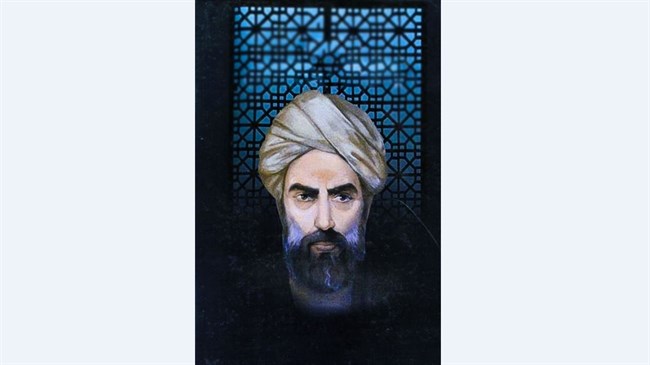
Sadr al-Din Muhammad b. Ibrahim b. Yahya Qawami Shirazi (ca. 1571–1636) is arguably the most significant Islamic philosopher after Avicenna. Best known as Molla Sadra, he was later given the title of Sadr al-Muta'allihin (Master of the Theosists) for his approach to philosophy that combined an interest in theology and drew upon insights from mystical intuition.
He championed a radical philosophical method that attempted to transcend the simple dichotomy between a discursive, ratiocinative mode of reasoning and knowing, and a more intuitive, poetic and non-propositional mode of knowledge.
He became famous as the thinker who revolutionized the doctrine of existence in Islamic metaphysics and extended the shift from an Aristotelian substance metaphysics to a (Neoplatonic) process metaphysics of change, from a metaphysics grounded in the primacy of substances as the stuff of existence to a metaphysics founded upon and moved by acts of being.
A keen thinker who wrote over 45 works in philosophy, theology, mysticism and scriptural exegesis, he attempted a wide-ranging synthesis of approaches to Islamic thought and argued for the necessity of the method of understanding reality through a mixture of logical reasoning, spiritual inspiration and a deep meditation upon the key scriptural sources of the Shia. A key figure of a group of thinkers whom Nasr and Corbin referred to as the 'School of Isfahan', he played a major role in intellectual life during the revitalization of philosophy under the Safavid Shah Abbas I (r. 996–1038 AH/1588–1629 CE) and later on in life was the most important teacher at the philosophical seminary known as Khan School in his hometown of Shiraz.
His magnum opus, ‘Al-Hikma al-muta'aliya fi-l-asfar al-'aqliyya al-arba'a', known as 'al-Asfar al-arba'a' ('The Four Journeys'), is a large compendium of philosophy and theology that, instead of following the traditional divisions of logic, physics, and metaphysics, maps intellectual inquiry upon a mystical metaphor of the soul's journey in this world.
Hence it is popularly known as the 'Four Journeys'. He began writing it in 1015 AH/1606 in Kahak and completed it in Shiraz in 1038 AH/1638. The first journey from this world to God provides the seeker with the intellectual principles for understanding philosophy such as the basic definition of philosophy and metaphysics, the significance of metaphysics and the question of being for this study.
In this journey, the seeker moves away from multiplicity and phenomenal deception towards unity and an awareness of the underlying nature of reality. The second journey in God with God is a discourse on the nature of God, the divine attributes and significantly including his famous proof for the existence of God. It is the stage of the mystic's absorption in the divine essence and his effacement of the self. The third journey from God to this world explains the God-world relationship, nature, time and creation and ontological categories in this world. For the mystic, this is the return to sobriety and a realization of the duties of moral agency in this world. The final journey in this world with God is a description of human psychology focusing on soteriology and eschatology and reveals most clearly the significance of Twelver Shi'ism to his thought. This is the final stage of the mystic's journey, a recognition that everything as a unified whole reflects the ontological unity of the divine and that the realized human recognizes a desire to return to the principle, the one who is the source of being, God.
'The Four Journeys' is a major source for the history of Islamic philosophical traditions: It reveals the strong influence of an Avicennan structure with major contributions from the critiques of Avicennism by Sohravardi and the Sufi metaphysical monism of Ibn Arabi (d. 1240). But it is not just the arguments of thinkers, well known in academic and scholarly circles, who are considered. He also addressed the positions of some major philosophers of Shiraz, who remain little known even to specialists studying Islamic philosophy, such as Mir Qiyath ad-Din Mansur Dashtaki (d. 948 AH/1541) and Shams ad-Din Muhammad Khafri (d. ca. 957 AH/1550).
His other works mainly deal with philosophical theology, such as 'Wisdom of the throne' and 'Divine witnesses'. One work, 'Inspired Recognitions' stands out as a dense epitome of his doctrine of being as expressed in the first part of the 'Four Journeys' on the semantics of existence. As a religious thinker, Molla Sadra was also keen to come to terms with his scriptural heritage, and he wrote three works on the hermeneutics of the Qur'an as a preparation for his own incomplete mystical and philosophical commentary on the text: ''Keys to the Unseen', 'Secrets of the Verses/Signs', and 'Allegories of the Qur'an'.

Add new comment